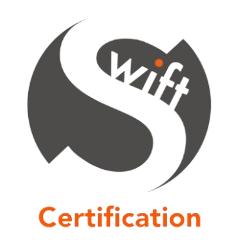Introduction
In today’s dynamic business environment, organisations across various industries are constantly seeking ways to enhance their operational efficiency, ensure employee well-being, and maintain a sustainable and responsible approach towards business practices. One key avenue for achieving these goals is the implementation of international standards, and ISO 45001 stands out as a paramount standard for occupational health and safety (OH&S) management systems. In this blog, we will explore how ISO 45001 can significantly improve businesses, with a specific focus on its benefits for the construction and manufacturing sectors.
Understanding ISO 45001: A Brief Overview
ISO 45001 is an internationally recognised standard developed by the International Organisation for Standardisation (ISO) to provide a systematic approach for managing occupational health and safety. Its primary objective is to create safer working conditions, prevent work-related injuries and illnesses, and continually improve OH&S performance within an organisation.
Benefits of ISO 45001 for Businesses
- Enhanced Workplace Safety
ISO 45001 emphasises the identification and assessment of occupational health and safety risks, ensuring that potential hazards are recognised and addressed. By proactively managing risks, organisations can reduce the likelihood of accidents, injuries, and illnesses in the workplace, leading to a safer and healthier work environment. - Legal Compliance and Risk Mitigation
Implementing ISO 45001 helps businesses comply with relevant occupational health and safety legislation and regulations. Compliance not only reduces the risk of legal repercussions but also fosters a positive reputation, demonstrating a commitment to responsible business practices. - Improved Employee Morale and Productivity
Prioritising the well-being of employees through ISO 45001 implementation can boost morale and job satisfaction. When employees feel safe and supported, they are more likely to be engaged and productive, contributing to overall operational efficiency. - Reduced Incidents and Downtime
The identification and control of occupational health and safety risks can significantly reduce the number of workplace incidents. Fewer incidents mean less downtime, lower costs associated with accidents, and increased operational continuity. - Cost Savings
ISO 45001 helps organisations streamline their processes and identify areas for improvement, resulting in cost savings. Reduced expenses related to accidents, insurance premiums, and legal penalties contribute to a more financially sustainable business model. - Enhanced Reputation and Stakeholder Confidence
Certification to ISO 45001 signals to stakeholders, including customers, suppliers, and investors, that the organisation is committed to the highest standards of occupational health and safety. A positive reputation for responsible business practices can differentiate a company in a competitive market and attract socially conscious partners.
ISO 45001 in Construction Businesses
The construction industry is inherently high-risk, with numerous potential hazards associated with heavy machinery, heights, and complex projects. Implementing ISO 45001 in construction businesses brings unique advantages:
- Site Safety Management
ISO 45001 provides a structured framework for managing safety on construction sites. By identifying and controlling risks associated with construction activities, organisations can create a safer working environment for their teams. - Contractor and Subcontractor Coordination
Construction projects often involve multiple contractors and subcontractors working simultaneously. ISO 45001 facilitates effective communication and coordination among different entities, ensuring a cohesive approach to occupational health and safety across the entire project. - Emergency Response Planning
Construction sites are susceptible to emergencies such as accidents, fires, or natural disasters. ISO 45001 mandates the development of emergency response plans, ensuring that employees are prepared to handle unforeseen situations and minimising the impact of emergencies on the workforce. - Equipment Safety Standards
Heavy machinery and equipment are integral to construction projects and pose inherent risks. ISO 45001 helps establish and maintain safety standards for equipment, ensuring proper maintenance, usage, and training to mitigate the risks associated with machinery.
ISO 45001 in Manufacturing Businesses
The manufacturing industry, characterised by complex processes and machinery, also stands to benefit significantly from ISO 45001 implementation:
- Process Safety Management
ISO 45001 encourages organisations to assess and manage risks associated with manufacturing processes. By implementing robust process safety management systems, manufacturers can prevent accidents, protect workers, and maintain the integrity of their production processes. - Occupational Health Monitoring
Manufacturing often involves exposure to various chemicals, noise, and physical stressors that can impact the health of workers. ISO 45001 emphasises the monitoring of occupational health, ensuring that employees are not only safe from accidents but also protected from long-term health risks associated with their work environment. - Supply Chain Integration
Manufacturers rely on complex supply chains with numerous suppliers and subcontractors. ISO 45001 encourages organisations to extend their occupational health and safety management systems throughout the supply chain, ensuring consistency and compliance among all parties involved. - Continuous Improvement and Innovation
ISO 45001’s emphasis on continual improvement aligns well with the manufacturing industry’s pursuit of operational excellence. Organizations can leverage the standard to drive innovation in occupational health and safety practices, adopting new technologies and methodologies to enhance workplace safety.
Challenges in Implementing ISO 45001
While the benefits of ISO 45001 are substantial, the implementation process may pose challenges for some organisations. Common obstacles include:
- Resource Allocation
Implementing ISO 45001 requires dedicated resources, both in terms of personnel and finances. Smaller businesses, in particular, may face challenges in allocating the necessary resources for the implementation process. - Resistance to Change
Employees and management may resist changes to established processes and workflows. Successful implementation requires effective change management strategies to address resistance and foster a culture of continuous improvement. - Complexity of Operations
Large and complex organisations may find it challenging to integrate ISO 45001 into their existing management systems seamlessly. Careful planning and coordination are essential to ensure a smooth implementation process. - Documentation and Record-Keeping
ISO 45001 requires thorough documentation of processes, risk assessments, and performance indicators. Organisations must invest time and effort in maintaining accurate records to demonstrate compliance with the standard.
Conclusion
In conclusion, ISO 45001 serves as a powerful tool for organisations seeking to enhance occupational health and safety practices, irrespective of their industry. The construction and manufacturing sectors, with their unique challenges and risks, can particularly benefit from the systematic approach and continuous improvement ethos promoted by the standard.
By prioritising workplace safety, organisations not only protect their most valuable asset—their employees—but also create a foundation for sustainable and responsible business practices. The numerous benefits, including enhanced reputation, cost savings, and improved employee morale, make ISO 45001 a strategic investment for long-term success.
While the road to ISO 45001 certification may present challenges, the rewards in terms of a safer, more efficient, and socially responsible business are well worth the effort. Embracing the principles of ISO 45001 not only transforms the way organizations manage occupational health and safety but also positions them as leaders in their respective industries.




